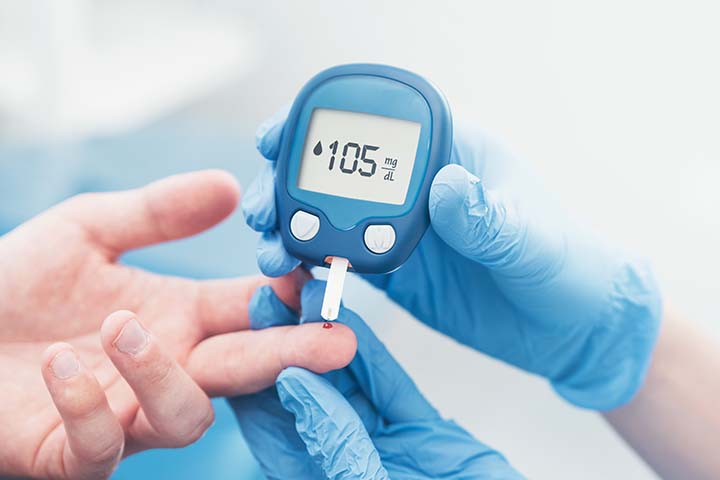11 Nov 2020
The Latest Recommendations to Help Prevent -- and Even Stop -- Diabetes
Estimated read time: 6 minutes, 50 seconds
When we talk about diabetes, we are talking about at least two different conditions. Type 1 and type 2 diabetes differ not only in their causes, but also in their clinical manifestations and treatment strategies. Both are produced by an imbalance in blood sugar levels, but there are very specific differences that people should keep in mind if they are worried about themselves or a loved one that may have diabetes.
- Type 1 diabetes is an autoimmune disease that results from the immune system attacking and mistakenly destroying beta cells, which produce insulin in the pancreas. Doctors are not sure what exactly causes type 1 diabetes. Several environmental factors are thought to catalyze the destruction of beta cells. Genetics could also play a role for some people, or it’s possible that a virus may trigger the immune system. There is currently no cure for this type of diabetes, but it can be managed with insulin. It often appears suddenly, and while it generally affects children and teenagers, it can appear at any point in life. Diet and lifestyle habits do not cause type 1 diabetes.
- Type 2 diabetes is the most common form of diabetes, and it means the body is not using insulin properly. While some people can manage their blood sugar levels through a healthy diet and exercise, others may need medicine or insulin to help keep them in check. More than 90% of people who suffer from diabetes have type 2.
Why Can’t the Body Regulate Sugar?
Diabetes occurs when the body has trouble using the sugar from foods as energy. The body does not produce enough insulin, the hormone in charge of bringing sugar to the cells, or cannot use the insulin it produces efficiently. The result is an accumulation of sugar in the bloodstream that can damage the nerves, eyes, kidneys, and other organs if left untreated.

High blood sugar levels can have immediate effects and put a person’s life at risk.
When we eat, our body breaks down carbohydrates into a simple sugar called glucose. It also produces a hormone known as insulin that sends a signal to the body’s cells to absorb glucose from the bloodstream. People with type 1 diabetes do not produce enough insulin or stop producing it altogether. Those who suffer from type 2 diabetes do not respond to insulin, and since sugar cannot enter cells, it builds up in the bloodstream.
Those who are overweight are often among the first individuals to be mentioned as at risk for type 2 diabetes.
Why is obesity such an important trigger? Studies suggest that abdominal fat, which surrounds the waist, leads fat cells to release “pro-inflammatory” chemical substances that can make the body less sensitive to the insulin it produces. This is known as insulin resistance.
Fear-Inducing Numbers
Diabetes is one of the twenty-first century’s major health challenges: the number of adults living with diabetes has more than tripled in the last 20 years.
In 2000, there were around 151 million adults with diabetes worldwide. In 2009, that number increased by 88%, to 285 million. Today, one in every 11 adults between 20 and 79 years of age have diabetes — a shocking 463 million people, more than 48 million of whom live in North America and the Caribbean. The United States is the third country with the highest number of diabetics worldwide, with 10.3% of its population suffering from the disease. Mexico, where 15% of the population has diabetes, holds the number 6 spot in the ranking.
How to Stop Diabetes
Although both types of diabetes are considered chronic illnesses that require daily self-management, the latest research suggests that type 2 diabetes cannot just be prevented but also reversed.
Unlike type 1 diabetes, whose origin is unknown, type 2 diabetes is associated with weight gain, a poor diet, and lack of regular exercise. Clinical studies carried out in the last two decades have confirmed some risk factors and show that it is possible to prevent or delay the onset of type 2 diabetes through lifestyle changes or medication.
The links between obesity and type 2 diabetes are firmly established; without a healthy diet and adequate exercise, obesity can lead to type 2 diabetes within a relatively short time frame.
A new study published a few months ago in Diabetologia, the official journal of the European Association for the Study of Diabetes, identified a new risk factor for type 2 diabetes: insomnia. According to its findings, people who had trouble sleeping or had poor sleep quality were 17% more likely to develop diabetes.
Researchers also evaluated several other previously established risk factors and confirmed that prevention strategies must be approached from many different perspectives, including decreasing obesity in children and adults, reducing smoking rates, and improving mental health and sleep quality.


Another important takeaway from these findings is the fact that type 2 diabetes can be stopped before it becomes a chronic condition. The safest and most straightforward way of doing so is to have regular medical check-ups.
Before people develop type 2 diabetes, they almost always have “prediabetes,” that is, blood sugar levels that are higher than normal but not yet high enough to be diagnosed as diabetes.
There are no clear symptoms associated with prediabetes, and that is why people often don’t know they have it. In fact, more than 80% of those with prediabetes are not aware of it. Getting medical check-ups and glucose tests is key.
An estimated 70% of people with prediabetes develop type 2 diabetes. Fortunately, however, the transition from one to the other can be prevented. A doctor will consider factors like age, family history, and ethnic origin when evaluating a patient, but especially body mass index and glucose levels, data that largely determines the risk of developing diabetes and the best course of treatment.
Can Diet Prevent and Stop Diabetes?
The answer is close to a resounding “yes.” Eating the right foods can help manage blood sugar levels and lose excess weight. Carbohydrate counting is an important part of diabetes type 2 management. Nutritionists or dietitians can help patients calculate how many grams of carbohydrates someone should consume in each meal. If necessary, a doctor can also prescribe medication.
Experts recommend eating small portions throughout the day, with an emphasis on the following foods:
- Fruits and vegetables
- Whole grains
- Lean proteins like chicken and fish
- Healthy fats like olive oil and nuts
Another recent study, published in July 2020, found that a modest increase in the consumption of fruits and vegetables can help prevent type 2 diabetes. People with a higher intake of fruits and vegetables and higher levels of plant-based nutrients in the blood had a 25% to 50% lower risk of developing type 2 diabetes. Researchers say you don’t need a wide variety of vegetables to enjoy the benefits: the equivalent of two thirds of a medium-sized apple or a little over a cup of mixed fruits every day offers protections.
Avoiding foods that can stifle efforts to maintain low blood sugar levels is just as important as eating the right things. Sodas and sugary drinks and white flours, rice, and pasta are at the top of the list. Luckily, there are currently several alternatives available that can help satisfy any craving. Finding substitutes and choosing a sustainable diet that helps you feel healthy and happy is the way to go.
According to the American Diabetes Association (ADA), successful diabetes management is based on selecting a diet that best adapts to a person’s lifestyle as well as staying active, the other key to preventing or stopping the disease.
The coronavirus pandemic has made these management and prevention measures much more urgent. There is not enough data to say whether diabetics are more likely to contract COVID-19 than the rest of the population. But as the ADA points out, it’s a question of the consequences, not a higher risk of getting the virus: people with diabetes have much higher rates of serious complications.
Sources: “Atlas de la diabetes”, International Diabetes Federation (IDF), “Current rates of diagnosed type 1 and type 2 diabetes in American adults”, British Medical Journal., American Diabetes Association (ADA), “Diabetes mellitus: The epidemic of the century”, World Journal of Diabetes, “Healthy lifestyle can prevent diabetes”, Harvard Medical School, “An atlas on risk factors for type 2 diabetes”, Diabetologia


